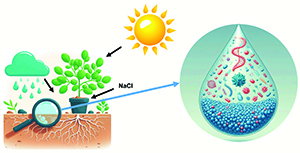PHASE-SEPARATING PROTEINS IN PLANTS AND METHODS USED TO STUDY THEM
DOI:
https://doi.org/10.18388/pb.2021_580Abstract
In order for a variety of biochemical processes to take place efficiently within the same cell, the existence of discrete areas within the cell is essential. In addition to encapsulated organelles, these include membraneless bio-molecular condensates, dynamically changing structures formed from proteins and nucleic acids. These condensates are often formed by liquid-liquid phase separation (LLPS). Numerous scientific reports in recent years have indicated that liquid-liquid phase separation (LLPS) is an important mechanism allowing plants to identify various biotic and abiotic stresses and respond to them. The following paper reviews the methods currently used to study macromolecular condensates and the function of proteins undergoing LLPS in plants.

Published
Issue
Section
License
Copyright (c) 2025 Marta Gapińska

This work is licensed under a Creative Commons Attribution 4.0 International License.
All journal contents are distributed under the Creative Commons Attribution-ShareAlike 4.0 International (CC BY-SA 4.0) license. Everybody may use the content following terms: Attribution — You must give appropriate credit, provide a link to the license, and indicate if changes were made, ShareAlike — If you remix, transform, or build upon the material, you must distribute your contributions under the same license as the original. There are no additional restrictions — You may not apply legal terms or technological measures that legally restrict others from doing anything the license permits.
Copyright for all published papers © stays with the authors.
Copyright for the journal: © Polish Biochemical Society.



